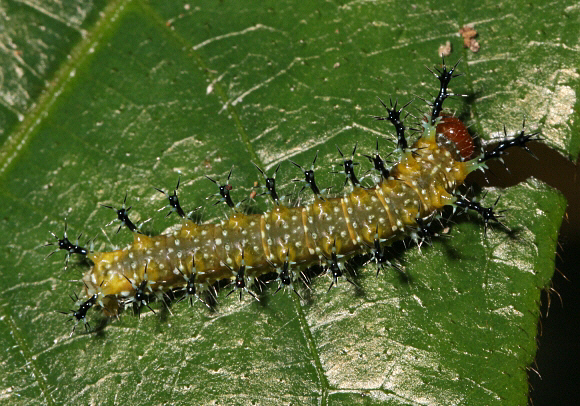
Introduction
The genus Pseudoneptis comprises of a single species bugandensis. The pattern of white bars and spots on a blackish ground colour is reminiscent of Neptis, hence the genus name. When seen in a photograph the markings appear white, but they are actually a very pale bluish-white. The costa on the hindwing ( hidden in the photograph ) is also pale blue, and when seen in flight the butterfly’s bluish appearance makes it very easy to distinguish it from its Neptis cousins.
Although the adult is superficially similar to Neptis species, the 2 genera are only distantly related. The morphology of the early stages indicates that Pseudoneptis is sufficiently different from other Limenitidinae genera to warrant the erection of a monogeneric tribe to contain it.
Pseudoneptis bugandensis is distributed from Sierra Leone to southern Sudan, and south to Congo, Uganda, Zambia and western Kenya.
Habitats
This is a forest species, found at altitudes between sea level and about 1000m.
Lifecycle
The larvae feed on Ficus, Antiaris (Moraceae) and Ritchiea (Capparaceae).

Adult behaviour
The butterflies are invariably encountered as singletons but are by no means scarce. They are often found in shady areas deep inside the forest. Although their flight is slow and graceful, they are very alert and difficult to approach, even in cool or overcast weather.
